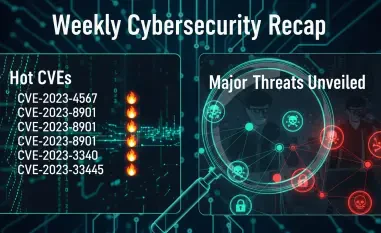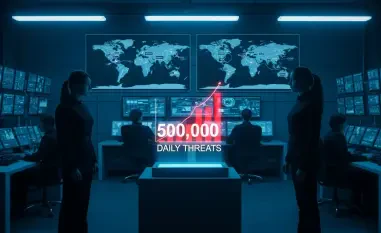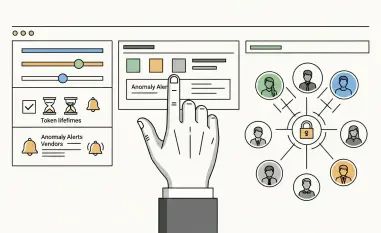Setting the Stage: A Costly Cyber Threat Landscape
In the current digital arena of 2025, a staggering statistic emerges from the shadows of cybersecurity: the average ransomware payout has skyrocketed to $3.6 million, marking a 44% increase from just a year prior, painting a vivid picture of a market where cybercriminals are not only adapting but thriving with precision and intent. This alarming surge, despite a 25% drop in the overall number of attacks, highlights the evolving nature of cyber threats. The purpose of this analysis is to dissect the forces propelling these escalating costs, understand the evolving strategies of ransomware operators, and forecast the implications for industries worldwide. With critical sectors bearing the brunt of multimillion-dollar demands, the stakes for businesses to fortify defenses have never been higher. This examination aims to provide actionable insights into a threat landscape that is reshaping financial and operational priorities across the globe.
Deep Dive into Market Trends: Unraveling the $3.6M Payout Phenomenon
Strategic Shifts: From Volume to Value in Cyber Attacks
The ransomware market has undergone a profound transformation, shifting from widespread, scattershot attacks to highly targeted operations designed for maximum financial impact. Data indicates that while organizations now face an average of five to six incidents annually—a notable decline—the severity of each attack has intensified, with 70% of victims succumbing to ransom demands. Groups like LockBit and RansomHub have honed their focus on exploiting specific vulnerabilities, ensuring that each strike yields significant returns. This trend highlights a market where quality trumps quantity, forcing companies to reassess traditional security measures that are often ill-equipped to counter such calculated threats.
Sector-Specific Pressures: High-Stakes Targets Under Siege
A critical driver of the $3.6 million average payout is the deliberate targeting of high-value sectors such as healthcare and government, where the cost of downtime can be catastrophic. These industries face staggering average payouts of $7.5 million, nearly double the $3.8 million seen in the finance sector. The rationale is clear: attackers capitalize on the urgency to restore operations in environments where delays can endanger lives or disrupt public services. This strategic focus not only amplifies financial damage but also raises complex ethical dilemmas about whether paying ransoms perpetuates the cycle of crime or if refusal risks greater harm. The market dynamics here reveal a predatory approach tailored to exploit the most vulnerable and critical systems.
Technological Vulnerabilities: Expanding Risks in a Connected Era
Modern technology adoption has inadvertently widened the attack surface, creating fertile ground for ransomware operators to exploit. Vulnerabilities in public cloud infrastructure account for 53.8% of breaches, while third-party integrations and generative AI applications contribute 43.7% and 41.9%, respectively. High-profile breaches in interconnected cloud ecosystems underscore how a single point of failure can cascade across multiple entities. Entry methods remain familiar—phishing at 33.7%, software flaws at 19.4%, and supply chain weaknesses at 13.4%—yet attackers often linger undetected for weeks, maximizing damage through data theft and deployment of malicious payloads. This evolving digital dependency signals a market where technological innovation, while beneficial, also fuels unprecedented risks if not safeguarded properly.
Operational Challenges: The Cost of Delayed Defenses
Another pivotal factor inflating ransomware costs is the persistent lag in incident response times, with containment often exceeding two weeks. Each attack results in an average of 37 hours of downtime, a figure that doubles to 74 hours in the transportation sector. Impediments such as limited network visibility, a shortage of skilled personnel, and alert fatigue among security teams exacerbate these delays, allowing adversaries to deepen their intrusion through lateral movement. The financial and operational toll of such setbacks intensifies the pressure to pay ransoms as a faster resolution, reflecting a market where reactive measures struggle to keep pace with sophisticated threats.
Future Projections: Smarter Threats Loom Large
Looking toward 2025 to 2027, the ransomware market is expected to grow even more perilous as cybercriminals leverage advanced tools like generative AI to refine phishing campaigns and automate attack processes. Economic fluctuations and tightening regulatory frameworks may further influence payout trends, with stricter data protection laws potentially increasing the penalties for non-compliance during breaches. While the volume of attacks might continue to decline, the precision and scale of each incident are projected to escalate, targeting niche vulnerabilities in interconnected systems. This forecast suggests a market poised for heightened complexity, demanding adaptive and proactive security investments to mitigate future losses.
Reflecting on the Past: Lessons and Paths Forward
Looking back on the analysis conducted in 2025, the ransomware market revealed a stark reality of soaring payouts averaging $3.6 million, driven by targeted attacks, technological vulnerabilities, and sluggish response mechanisms. The examination underscored how cybercriminals had shifted toward precision over volume, exploiting critical sectors and digital dependencies with ruthless efficiency. These findings highlighted the urgent need for industries to address systemic weaknesses that amplified financial damage.
Moving beyond reflection, organizations must prioritize comprehensive mapping of attack surfaces to identify and fortify weak points. Enhanced monitoring of internal network traffic can detect early signs of lateral movement, while targeted training programs should equip teams to counter emerging tactics, especially those powered by artificial intelligence. Additionally, exploring cyber insurance options, while weighing the ethical implications of ransom payments, emerged as a pragmatic step. By adopting these strategies, businesses can build resilience against a threat landscape that showed no signs of abating, ensuring they are better positioned to navigate future challenges in a digital environment fraught with peril.













